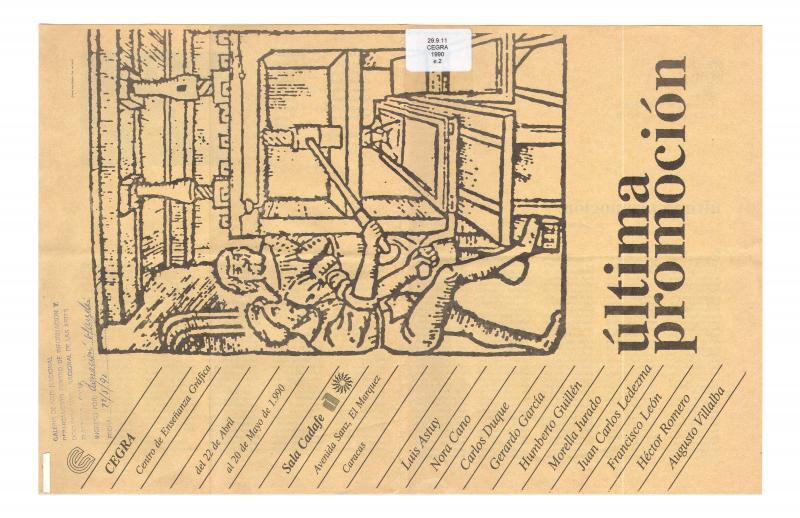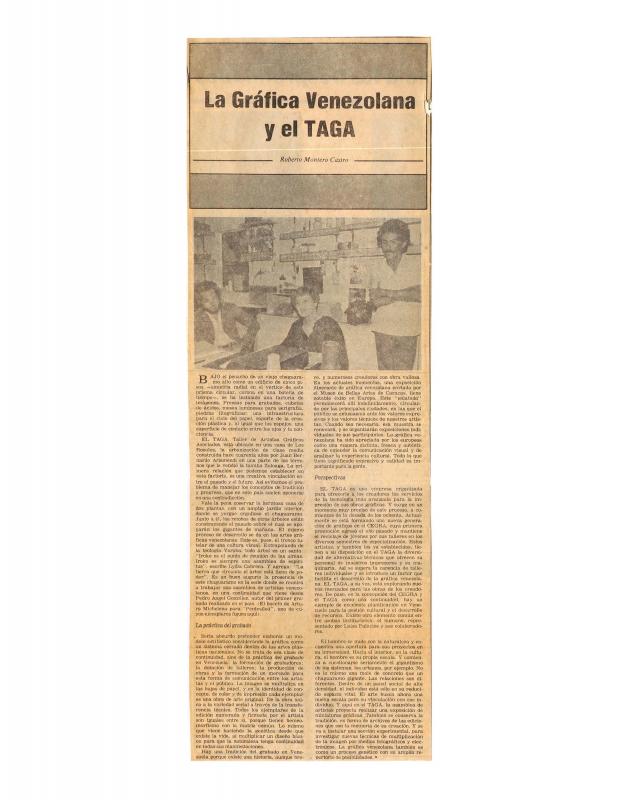This article by Roberto Montero Castro contributes to the body of knowledge about TAGA (Taller de Artistas Gráficos Asociados, Caracas), offering information that is not included in other texts of the era. TAGA was founded four years before Montero Castro wrote this article. Unsuccessful proposals had before been offered for the construction of a headquarters adjoining the GAN (Galería de Arte Nacional), [originally] proposed in February 1978, but it was never built. By August 1979, there were mentions in the press of a decision to begin activities at Los Rosales house (built by Juan Bernardo Arismendi). Montero Castro’s text starts with the headquarters: its 1940s architecture, the neighborhood where it was located, and even the immense Chaguarama palm tree in the garden, which he believed to be a favorable sign, as if it could be considered symbolic of the Venezuelan graphic tradition. Next the author evaluates the history of engraving in Venezuela from the perspective of practice, and appreciating the co-existence of CEGRA (Centro de Enseñanza Gráfica, Caracas) and TAGA [see the text by critic Roberto Guevara, “El CEGRA 5 (cinco) años después [CEGRA Five Years Later] (doc. no. 1153429) in the ICAA digital archive; and the text “Última promoción” [Final Class] (doc. no. 1154332)] written by Ida Gramcko. Another contribution [of this text] is its consideration of graphic work within a sociological context, taking into account human scale, cultural production, and the natural environment. Montero Castro offers a valuable panoramic vision of and context for TAGA, explaining the present state of the Taller, and why it was launched in 1980, while also establishing links to the past and proposing a future direction. For another essay on TAGA, see [TAGA: A True Dream] by Bélgica Rodríguez (doc. no. 1081178).



